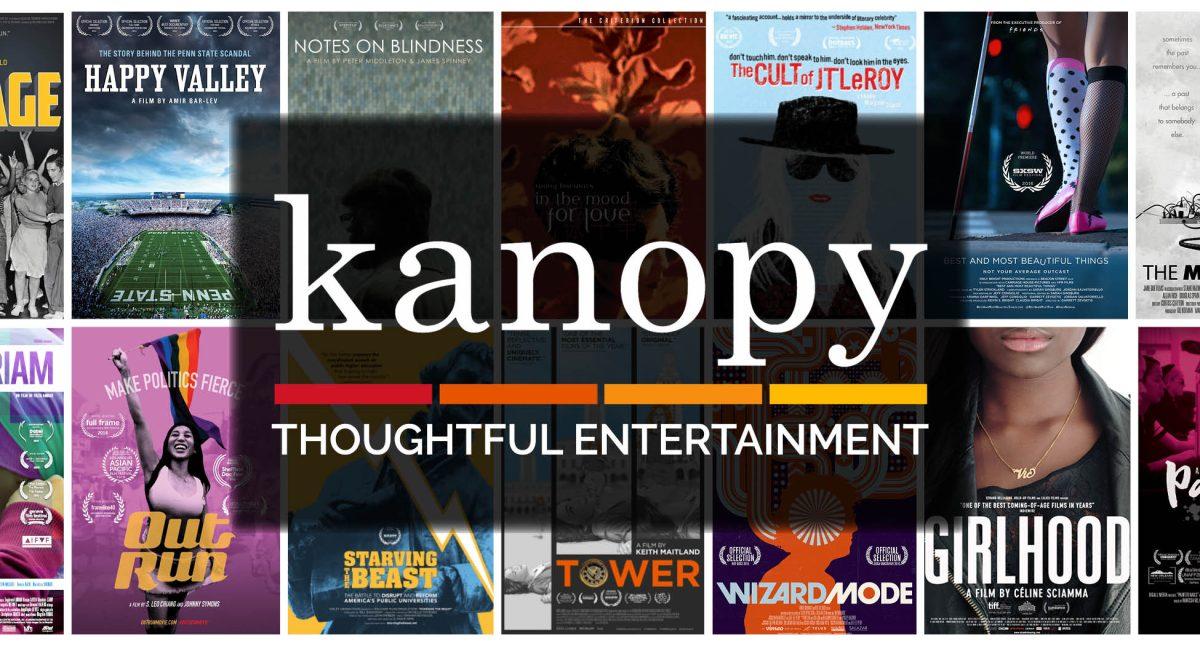Did you know that, as a Wellesley student, you have free access to a streaming service with a library of around 30,000 titles that includes everything from recent independent films and documentaries to the Criterion Collection? Founded in 2008 by Olivia Humphrey in order to help make film a more accessible and integral resource in academia, Kanopy Streaming now not only serves college and university campuses around the globe, but also an ever-growing number of public libraries.
“I believe that film plays a very important role in educating our next generation of global citizens,” Humphrey explained in a phone interview. “I felt that film wasn’t being represented in that way on campus. Students were more likely to be assigned books or journals, which are also very important, but considering students responded best to film, it didn’t make any sense why film wasn’t more integrated into the curriculum.”
Kanopy’s library is more specifically curated than services like Netflix or Amazon Prime. “Our mission is thoughtful film. We want our audiences, when they come to Kanopy, to be challenged in the way they think, to be enriched [and] engaged,” Humphrey said. “Perhaps they understand a particular issue differently, perhaps they’re feeling more open minded about certain things and the way they see the world they live in… We have this strong mantra and very strong understanding that when a user comes to Kanopy, they know what sort of film they’re going to watch.”
Humphrey noted that current campus viewership trends favored the perennially popular Criterion Collection, which includes such iconic films as “Rashomon,” “The Great Dictator” and “8 ½”; films on the subject of diversity — especially documentaries — and world cinema. “We’re noticing that students across America are very, very interested in hearing stories,” Humphrey commented.
Many of these films receive no or extremely limited theatrical release in the U.S., and are not available through other platforms. Kanopy makes them easily and freely accessible. “That’s one of the things I’m very proud of,” Humphrey said. Within Kanopy’s current library, she lists Raoul Peck’s Oscar-nominated James Baldwin documentary “I Am Not Your Negro”, the 2010 documentary “Killing Us Softly 4” and the acclaimed Italian neorealist classic “Bicycle Thieves” as being three of her favorites.
Beyond its extensive collection, ranging from Oscar winners to PBS specials and how-to videos, Kanopy’s business model is yet another reason to use the service. Filmmakers who put their work on Kanopy receive revenue on a per-view basis. The more views their films receive, the more revenue they make — a unique feature among streaming services. From the filmmaker’s perspective, Kanopy’s transparency sets it apart in the best sort of way. “[Filmmakers] can log into their administrative portal on Kanopy and see every second of every film that’s being watched where, what device, et cetera. At any moment in time, they’re going to be able to have a snapshot of the revenue they’re receiving from Kanopy for that month,” Humphrey said.
While some titles are removed in order to make room for new content — around 100 additions each week — they are almost always titles with little to no viewership, especially those that have simply lost relevance or become outdated. “With our model, the longer a film is on Kanopy, generally the more it makes over time, an inverted sort of revenue curve from every other media platform I know about. It gains traction, it gains comments, it gains points, so it gets floated to the top,” Humphrey explained.
“It’s very, very rare that one of our filmmakers will say, ‘I want to remove a film at the end of my three or five year contract’ because they tend to be very happy with the transparency and their returns,” she said, adding, “We have these great relationships with our content owners that we spend a lot of time and effort developing.”
The most recent development at Kanopy is the service’s expansion to a number of public libraries across the U.S. “The launch to public libraries is a natural progression for us, so we can send our graduating students to their local public library to continue their relationship with Kanopy, or their playlists and watch lists, and viewing histories are all restored, so it’s a nice transition from one account to the other,” Humphrey said. “We want these films to be available to as many people as possible. Our model is such that it’s a very attractive proposition. Say we launch in New York, and suddenly eight million people now who have access to a New York library card can theoretically access the platform. It’s a very, very democratic approach to building an audience, and I love that about our model. At the same time, it’s also benefiting the industry. This industry struggles to find homes for their films — suddenly the whole world is opened up to them.”
Kanopy can be accessed online at kanopystreaming.com or by downloading the Kanopy app.



